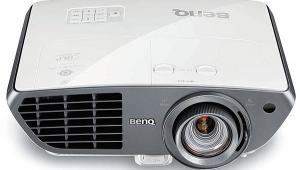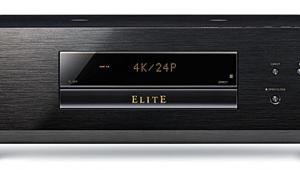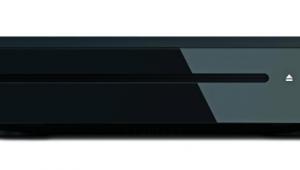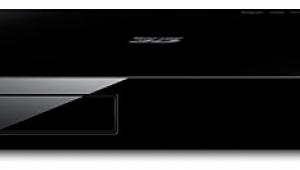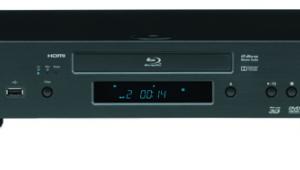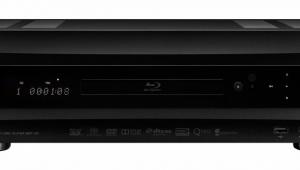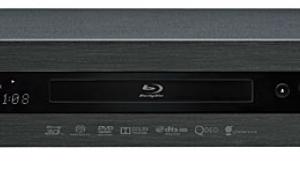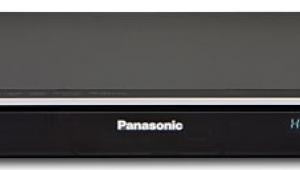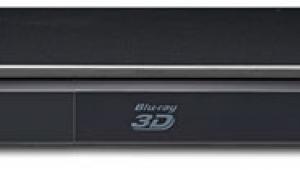Samsung BD-E6500 Blu-ray 3D Player

I've been reviewing Blu-ray players since the inception of the format in 2006, and it's amazing how far the format has come in six years. Gone are the days of seemingly endless boot-up times and glacial disc loading. The most commonplace features now—built-in Wi-Fi, streaming apps, and 3D capability—were only pipe dreams during the format's inception. The marketplace is crowded with players under $250, and most offer similar feature sets. So when it's time to purchase your next (or first) player, what will ultimately tilt your decision in one direction or another?
Modern Love
Samsung was the first manufacturer to release a Blu-ray player, and it’s continued to be at the forefront of the evolutionary aspects of the format. The BD-E6500 is the company’s current top-of-the line player, and at $230 MSRP (about $179 online), it offers a wide selection of add-ons. Not only will it play back Blu-ray, Blu-ray 3D, and DVD discs, the BD-E6500 includes Samsung's proprietary Smart Hub feature to access a wide variety of online content. The player also includes a built-in Web browser with Wi-Fi so you can surf the Web; AllShare Play, which can access and stream content from any compatible device such as a PC or home server; and it sports a Disc-to-Digital streaming service to unlock digital copies of your DVD collection (for a nominal fee).
Virtually every Samsung player I've used the past few years has been a classy-looking piece of electronics, and the BD-E6500 is no exception. A silver band running along the front of the unit highlights the sleek form factor, which breaks up the black-box look. There are no visible buttons on its façade, and there's a single USB port on the right-hand side. Once the unit receives electricity, a touch-sensitive power button appears below the disc slot. Unlike most Blu-ray players, the Samsung boasts a slot-style disc mechanism similar to what's found on the Sony PS3. Once powered on, the other commands glow to life and include Play/Pause, Enter, and Eject.

The rear-panel connections include a single HDMI 1.4 port that supports Blu-ray 3D and Deep Color, an optical audio output, an Ethernet port, and two HDMI inputs that allow the player to function as an HDMI hub for your home theater system. Unlike some other Blu-ray 3D players, the Samsung doesn't include a second audio-only HDMI output for end users who have a 3D display but an older AVR that can't pass a 3D signal. And you won't find any analog connections whatsoever—this baby is pure digital. The BD-E6500 can decode both Dolby TrueHD and DTS-HD Master Audio tracks and send them via HDMI as PCM to an A/V receiver or surround processor (HDMI 1.1 or later), or it can send the raw bitstream to HDMI 1.3 AVRs sans the beeps and clicks from the Blu-ray menus.
The HDMI output supports Samsung's Anynet+ function, which is its proprietary HDMI CEC (Consumer Electronics Control) that allows a Samsung TV and Blu-ray player to communicate with each other. In theory, this simplifies playback so when you turn on the Blu-ray player, the TV will also power on and change to the appropriate input. If you don't own a universal remote with macros, this may simplify things for the babysitter or for the technologically challenged in your home.
User Interface and Setup
Upon first power-up, the Samsung runs through a basic setup program that's extremely intuitive and fast. Once completed, you land at a Home menu that offers five different options: Smart Hub, AllShare Play, Disc to Digital, HDMI Input, and Setup.
Smart Hub takes you to all of the online streaming services the unit offers. In addition to a plethora of proprietary apps, the player boasts popular services such as Vudu, Hulu Plus, Netflix, Pandora, and YouTube. The interface takes nearly 30 seconds to launch; once there, navigation is rather snappy, but launching a specific service takes up to another 30 seconds to load. It's here that you'll find the Web browser, but I doubt many will find it useful without at least adding an optional USB keyboard. Using the supplied remote to type in Web addresses is laborious, and I think most consumers would choose to use their smartphone or tablet to surf the Web in lieu of this interface.
The AllShare Play interface is intuitive and easy to navigate. Unfortunately, the media player’s streaming capability is somewhat limited and doesn't include either WMA Lossless or FLAC file support—the two formats I've used to stored the majority of my music. On the plus side, any MP3 files downloaded from Amazon or AAC files from iTunes played without a hitch. Furthermore, streaming pictures and videos from my home server worked like a charm.
 Disc-to-Digital lets you unlock digital copies of any Blu-ray or DVD discs you own. Upon launching the service, the only option available is Vudu, and there isn't a choice for my UltraViolet account. Granted, UltraViolet is one of the most user-unfriendly concepts Hollywood has launched in my lifetime, so not being able to utilize this aspect of the player isn't a big loss.
Disc-to-Digital lets you unlock digital copies of any Blu-ray or DVD discs you own. Upon launching the service, the only option available is Vudu, and there isn't a choice for my UltraViolet account. Granted, UltraViolet is one of the most user-unfriendly concepts Hollywood has launched in my lifetime, so not being able to utilize this aspect of the player isn't a big loss.
The HDMI input function lets you select one of the two HDMI input ports. Unfortunately, HDMI 1 is the only port that allows passive passthrough of the incoming signal without having to power on the Blu-ray player. So if you've run out of HDMI inputs on your display and plan to use this aspect of the Samsung, you may increase your carbon footprint by having to have one additional device powered up in your system.
Finally, the Setup menu includes the usual suspects: Display, Audio, Network, System, and Support. If you've spent a lot of time surfing the various menu options available on various Blu-ray players, you won't have any issues navigating these screens. But if you need help, the included user manual is well laid out and easy to comprehend.
The supplied remote is one of the most ergonomically incorrect I've used in years. The navigation buttons are located in the bottom third portion of the remote and aren't easy to reach. The most-used keys (Stop, Play, etc.) glow in the dark for a couple of minutes, but the Popup Menu and navigation buttons don’t. For Netflix users, there's a direct access button on the remote, but it's located right below the Play button and is a similar size and shape, making it much too easy to select the wrong option in a darkened room.
- Log in or register to post comments
